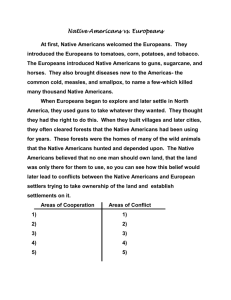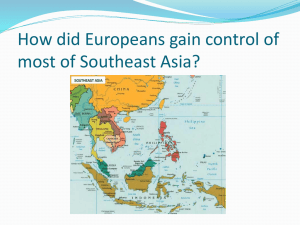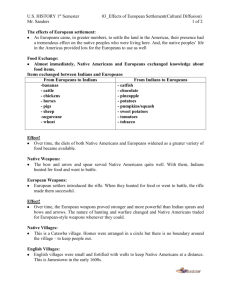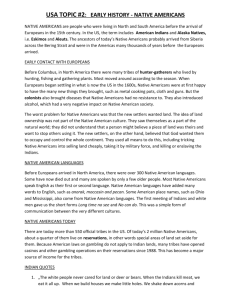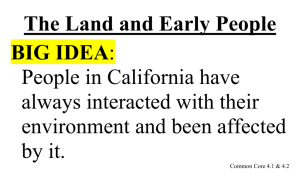Tension between European settlers and Native Americans overview.
advertisement
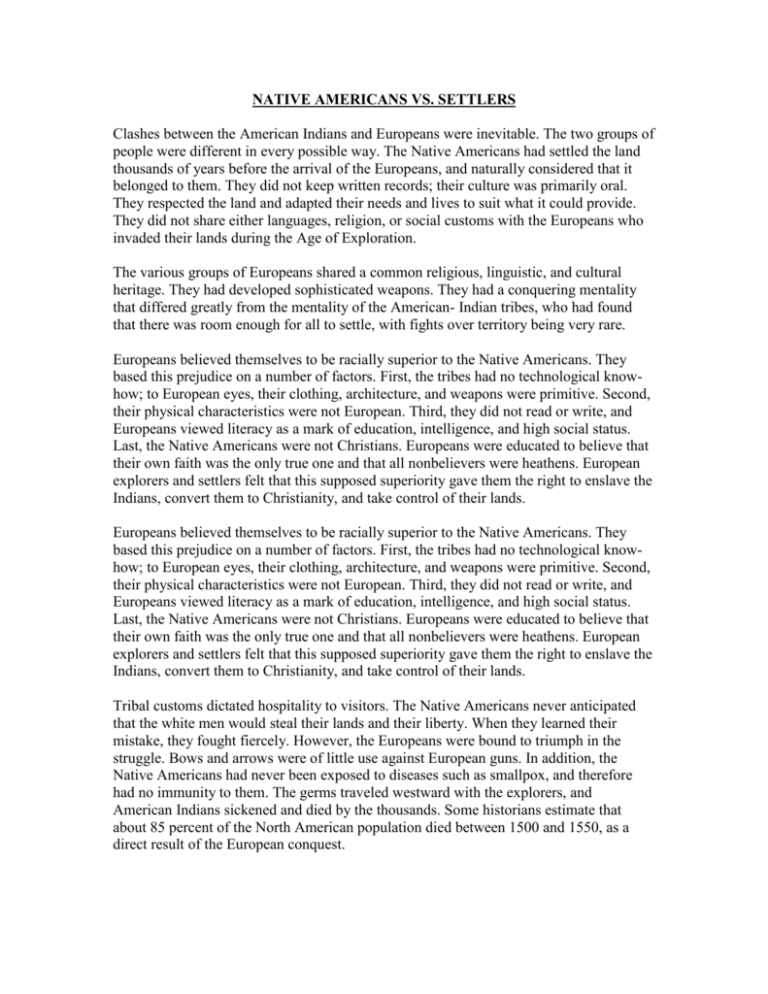
NATIVE AMERICANS VS. SETTLERS Clashes between the American Indians and Europeans were inevitable. The two groups of people were different in every possible way. The Native Americans had settled the land thousands of years before the arrival of the Europeans, and naturally considered that it belonged to them. They did not keep written records; their culture was primarily oral. They respected the land and adapted their needs and lives to suit what it could provide. They did not share either languages, religion, or social customs with the Europeans who invaded their lands during the Age of Exploration. The various groups of Europeans shared a common religious, linguistic, and cultural heritage. They had developed sophisticated weapons. They had a conquering mentality that differed greatly from the mentality of the American- Indian tribes, who had found that there was room enough for all to settle, with fights over territory being very rare. Europeans believed themselves to be racially superior to the Native Americans. They based this prejudice on a number of factors. First, the tribes had no technological knowhow; to European eyes, their clothing, architecture, and weapons were primitive. Second, their physical characteristics were not European. Third, they did not read or write, and Europeans viewed literacy as a mark of education, intelligence, and high social status. Last, the Native Americans were not Christians. Europeans were educated to believe that their own faith was the only true one and that all nonbelievers were heathens. European explorers and settlers felt that this supposed superiority gave them the right to enslave the Indians, convert them to Christianity, and take control of their lands. Europeans believed themselves to be racially superior to the Native Americans. They based this prejudice on a number of factors. First, the tribes had no technological knowhow; to European eyes, their clothing, architecture, and weapons were primitive. Second, their physical characteristics were not European. Third, they did not read or write, and Europeans viewed literacy as a mark of education, intelligence, and high social status. Last, the Native Americans were not Christians. Europeans were educated to believe that their own faith was the only true one and that all nonbelievers were heathens. European explorers and settlers felt that this supposed superiority gave them the right to enslave the Indians, convert them to Christianity, and take control of their lands. Tribal customs dictated hospitality to visitors. The Native Americans never anticipated that the white men would steal their lands and their liberty. When they learned their mistake, they fought fiercely. However, the Europeans were bound to triumph in the struggle. Bows and arrows were of little use against European guns. In addition, the Native Americans had never been exposed to diseases such as smallpox, and therefore had no immunity to them. The germs traveled westward with the explorers, and American Indians sickened and died by the thousands. Some historians estimate that about 85 percent of the North American population died between 1500 and 1550, as a direct result of the European conquest. When the Europeans began to establish colonies, more clashes arose. Native Americans and Europeans were now fighting for possession of land. Despite the tenacity of their struggles, the tribes gradually began giving way to the superior weapons and organization of the Europeans. They were slowly but surely driven away from their ancestral lands.
